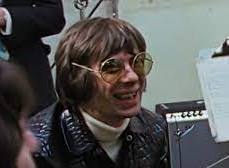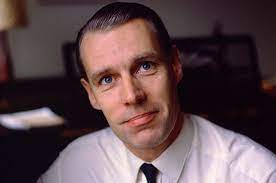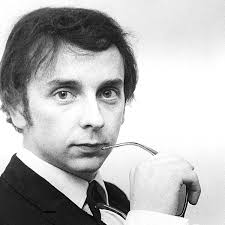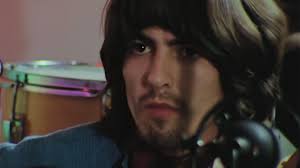|
REVIEW: LET IT BE---
Six different albums, seven different producers. . .one opinion
continued. . .
I think this new mix-the-voice-up priority is just another
manifestation of prevalent cultural “dumbing down,” in this case pandering
to the 21st century personality-obsessed public, rather than serving those who listen to
all parts and aspects of a song, en toto.
The greatest Martin/Okell
“Let it Be” sin, however, is that they brought little daring or imagination
to the proceedings. They tried, give ‘em credit, but they didn’t go far
enough. The kind of thoughtful and inventive approach they dreamed up, say,
for the thorny problem of remixing “Sgt. Pepper’s Lonely Hearts Club
Band”---opting for a stereo mix that emulated the original George
Martin/Geoff Emerick/Beatles mono release---is absent.
This should not surprise,
however, given that such an adventurous policy (also found in Giles’s album
of terrific mash-ups accompanying the Las Vegas show, “The Beatles Love”)
was also lacking in his previous two Beatles remix releases: the “white
album” and “Abbey Road.” Follow this tangent a moment, please. Technically speaking, Martin/Okell did creditable
work on these albums, but there were drawbacks. The remixed “white album”
now plays like a live performance---perfectly fun to hear---but loses the
original ambience of a record, an album, a sense of being one
creation. It’s like a novel reduced from the sum of its chapters to. . .its
chapters.
What’s more, Giles, a
bass player, seems to have sometimes imposed his bass taste on
McCartney’s playing. That is, the aural bass “personality” often carefully
shaped by Emerick and McCartney (with echo chambers, or special mikes, etc.)
has frequently either been removed or lost, the result being that the bass
on the new “white album” mixes too often sounds like just a generic rumbly
bass. Does Martin think the Beatle bass is simply part of the rhythm
section, meant to support; to be in the background? Does he not understand
the importance of McCartney’s melodic playing as part of the song’s
arrangement? Imagine moving Ringo more to the background in a mix, as if
he is just keeping time, and not creatively contributing an essential part
of the song’s arrangement. That’s how wrong-headed this is. How many Beatles
songs, after all, can you play back in your head without hearing Ringo’s
unique ideas, or McCartney’s lyrical bass? (Think: “Rain,” and “With a
Little Help From My Friends,” for random examples.) Worse, Martin has also,
on occasion, reduced the bass’s presence. Example: the lyrical
propulsion, the forward momentum, supplied by McCartney’s walking basslines
on the deliciously slow “Revolution 1” on the “white album”---indispensible
to the arrangement---is gone. At least such bass meddling does not
seem present on the new "Let it Be."
Also in the realm of
unimaginative, there is the very large problem of outtakes and alternate
versions of songs. Giles Martin left all the many such specimens on the “white
album” and “Abbey Road” . .unmixed! He justified this as wanting the
listener to hear the vault versions just as they were left, just as he found
them. Maybe this is sincere, or maybe it was just a time-saving excuse to
meet a deadline, or maybe it’s just plain pretentious, I don’t know. I do
know that it does not serve the music. To whit: there are Harrison guitar
fills in the unmixed outtake of “I’m So Tired” (cite date, number), and, on
one verse, gorgeous harmony vocals. The guitar fills are much too low, and
the vocals overbearingly prominent. What on earth would have been the harm
of mixing the track in order to give the guitar its due presence, and mix
the vocals in proportion with the song? Better still: why not also “fly” the
background vocals into the second part of the song, where they would have
appeared had the band elected to keep them. Sigh. There are various other
examples.

Glyn Johns |

George Martin |
“Let it Be,” more than any other remixed Beatles album so far, badly
needed imagination, indeed, creative rethinking. The album has always been
neither fish nor fowl, what with live performances juxtaposed with songs
laden with (first rate) Richard Hewson orchestration and awful, Spector-ordered,
Muzak-y ladies' choirs---antithetical, in other words, to the purported
band-only concept of the project. This is what prompted McCartney to
commission “Let it Be. . .Naked,” as an attempt to make the definitive “Get
Back” sessions record. If you consider “Let it Be” to be the definitive
album, as most fans do---orchestrations and all---then why not
enrich the existing experience? Why not take some chances? Giles
usually cites reluctance to “tamper with history,” yet all his changes to
the record already do this! “Let it Be,” the album, in my view, begged to be
“repaired,” made less ungainly, expanded (it’s only 35 minutes.) How? Like
this:
*First, add “Don’t Let Me
Down,” bizarrely omitted by Spector just because it had been issued on the
clumsy grab-bag Christmas 1970 album commissioned by Apple CEO Allen Klein:
“Hey Jude.” This was a bulwark of the “Get Back” sessions. The single
version would have been fine, or another studio or live version. Note: On
the very weird “EP” that comes with the new “Let it Be,” there is indeed a
remixed single version of “Don’t Let Me Down”---but with the same cold
thinness of sound as on “Two Of Us," For You Blue," "Get Back"---complete with introductory studio
chatter. The chatter was in keeping with the occasional banter of the
original Spectorized “Let it Be” album (and Johns’s “Get Back" LP, for that
matter), so one suspects that Martin/Okell prepared the song for possible
inclusion in the revised album. Did they get cold feet? Did that “tampering
with history” nonsense trip them up?

Giles Martin |

Phil Spector |
*"Across the Universe” is very problematic for a lot of reasons,
as demonstrated by its having been released in many versions over the years. First, it really does
not belong on “Let it Be” at all, in my view, having been recorded a year
earlier, and being stylistically at odds with the stripped-down, band-only
aspect of the project. Lennon retrieved it only because he didn't have
enough songs ready for the sessions. That aside, Martin and Okell were on
the right track here, in slightly increasing the presence of Beatles
instruments, all but hidden by the Richard Hewson orchestration on the
“re-produced for disc” Spector take. But Martin/Okell didn’t go far enough.
The song is just not that different from the Spector release. Either of two
more daring options would have been better: 1) keep the beautiful orchestral
arrangement, lose the tacky "heavenly choir" so reviled by McCartney and many
fans, further increase the Beatles instrumental presence---and, most
important, add back the Beatles harmony vocal lines removed by Spector.
(But do not keep the harmonies by fans Lizzie Bravo and Gayleen Pease,
correctly removed by Glyn Johns on his second pass at a “Get Back” album, as
they added a kind of children’s song atmosphere that Lennon found
objectionable), or, 2) Eliminate the orchestra and chorus entirely, use the
band-only version minus the girl singers. Speed-correct. Either choice would
have constituted dramatic improvement.
*"The Long and Winding
Road”---Remove the silly ladies choir, keep the lush Hewson orchestral
backing (emulated by “Wix Wickens” in recent years at McCartney shows)
increase the presence of the band, and Preston. Martin/Okell did the latter,
at least, but not enough. Why keep the orchestration? Because, as Martin/Okell
and McCartney agreed, the album is considered "official" by most fans, and
this song was an enormous hit. (Plus there are un-orchestrated versions on
"Let it Be. . .Naked," "Anthology 3," and "Get Back.")
*"Dig it”---This goofy
jam could have been increased, even to the 4:10 length it was on the
“Get Back” album. Credit Martin/Okell with mixing the piano up on the new
“Let it Be” snippet, as it adds to the slim proceedings. Adventurous:
take the 4:10 version, divide into two parts, used them as interludes
slipped into the album, side one and two, giving it a sense of continuity.
(Duh.)
*"Get Back”---Restore the
brilliant outro so stupidly eliminated by Spector (and even use more
of it, as Johns did). It could kick in after the applause and
Lennon’s “audition” quip. A surprise reprise, as it were, closing the album.
*More nuanced creativity
with the mixes, dumping the garish notion of boosting vocals over the band.
A great thing about “Let it Be. . .Naked” is how Preston’s electric piano
and Harrison’s guitar fills are not only often given more prominence, but,
in some instances, as I said earlier, heard for the first time. There
should have been an ear for this kind of detail on “Let it Be,” instead of
pandering to supposed fan expectations of the album being identical to the
original. (Closest thing I found to a “discovery” was that you now hear
Ringo’s bass drum keeping time during the snare “bridges” in “Two of Us.”)
*This will
be controversial, but it shouldn’t be. The biggest “one that got away”
on “Let it Be,” and perhaps in all Beatles history, is Harrison’s “All
Things Must Pass.” Could a rendition have been prepared for “Let it Be?”
Answer: yes. Peter Jackson’s team developed AI technology that is, for the
first time, able to turn the mono camera sound track into discrete
multi-tracks. Translation: the performances in Twickenham can now be mixed!
Well, there are several Twickenham Beatles run-throughs of “All Things Must
Pass,” with gorgeous, if simple, harmonies. Problem: Harrison’s lead vocals
are guide vocals, at best. But just a few weeks after the “Get Back”
sessions, Harrison went into Abbey Road Studios---on his birthday, Feb.
25---and recorded splendid solo demos of “All Things Must Pass,” “Old Brown
Shoe,” and “Something.” So. . .cull the best of the Beatles’ run-throughs of
the song into a complete version (boosting the drums, of course),
and add George’s studio demo vocal, in which he accompanies himself on
electric guitar. Fans have already done a
crude version of this
on Youtube, adding the demo to one of the rehearsals of the song, and the
results are persuasive. Tamper with history? Do it! Imagine what a
selling point this would have been for a new “Let it Be.” World premiere!
Beatles version of George Harrison’s “All Things Must Pass!”
 |
A releasable Beatles version of "All Things Must Pass?"
Is such a thing possible? Thanks to Peter Jackson's new AI
technology, the answer is an emphatic yes. |
Martin/Okell and Apple missed this boat. Had all these things been done,
this would have constituted an intelligent, thoughtful enrichment of the
still awkward, uneven collection that is the new, remixed “Let it Be” album. It
would contain the original material, but with many new selling points.
Factor this in with the questionable mixing calls on the thing (especially
pertaining to the drums, which are occasionally less prominent---"I Me Mine"
and "Let it Be" come to mind---even compared with certain tracks of the "Get Back" album)---and
it is reasonable to suggest that Martin/Okell might no longer be the best
team for The Beatles production job.
The thing that most
betrays the team’s lack of (or feeble) imagination, however, must be the
downright bizarre so-called “EP” which Martin/Okell contrived for the new
“Let it Be” boxed set. It's a real head-scratcher. There are only four songs
on one dedicated CD. Why? The answer for the first two songs is simple: the
Glyn Johns mixes for “Across the Universe” (stripped of Beatles harmonies,
and the girls) and “I Me Mine” (left at original 1:34 length) were both part
of a
fourth Johns attempt at a “Get Back” album. Following this? The
“Get Back” album included in the new “Let it Be” box was Johns’ first
pass, lacking these two songs. Well, why didn’t Martin/Okell simply use the
fourth Johns proposed LP? Or just include these two songs as bonus tracks on
the "Get Back" album (first pass) included in the "Let it Be" boxed set?
As for the other two
songs on the “EP,” the first is the remixed single version of “Don’t Let Me Down"
referred to above. The new mix renders the song thinner, and, to repeat, the
pre-song chatter suggests Martin/Okell prepared it for inclusion on “Let it
Be,” then chickened out. Finally, there is the single version of the “Let it
Be” single in a good new mix that at least boosts the guitar solo that was
strangely mixed down in the original George Martin single. (But
this new mix---and the original single---do not come within a country mile
of the Glyn Johns "Let it Be" mix, for my money. It has
beautifully live presence, fullness, intimacy that was all but erased by the
Martin-produced single, oddly enough---with the grand solo given due
prominence.)
Why did they make this
so-called EP at all? It was unnecessary. Again: use the two extra Johns
tracks by releasing version # 4 of his “Get Back" album, instead of
version 1, or as bonus tracks on version 1. Place the new mix of
“Don’t Let Me Down” on the “Let it Be” album proper, where it belongs---and
add the “Let it Be” single as a bonus track (either on the “Let it Be”
album, or one of the two bonus discs of "Get Back/Let it Be" outtakes and
rehearsals.) Simple. Do this, and the strange EP disappears---in theory,
freeing up that third CD for more session outtakes (seeing as the
existing two are woefully short.) The EP was bad thinking, nothing less.
But back to the elephant
parts. Despite the fact that one can cherry-pick preferred mixes of all the
songs from the various albums, can one still choose a “best” "Let it Be"
iteration? Yes. My pick: the 2009 CD remaster of the original LP. It has
power, depth, a consistent feel, vocals in sane proportion to instruments,
and an abiding warmth lacking on the new Martin/Okell version.
Which brings up the
initial question posed in this piece: is there one best album of
the six made from the
“Get Back/Let it Be” sessions? One that gets the song choices and the mixes
sufficiently right, and really represents the live Beatles project
that the group intended?
Yes.
And the answer is the
2002 “Let it Be. . .Naked” album, which really should have been released as
“Get Back” with the original cover of the older Beatles looking down from
the EMI stairwell (updating the same pose on their first LP, "Please Please
Me.")Calling it “Naked” was a marketing decision ensuring that fans of the
“Let it Be” album would understand they were getting “stripped down,” Ex-Spectorated,
versions of the songs. (What they often got were different takes entirely,
or hybrid takes.) This album, a pet McCartney project, is the one that
could have come out in 1970, had cool heads prevailed.
True, the "Naked" song
versions have, in some cases, been built from more than one performance,
but they are live in feel, with no orchestras or choirs. What’s more, there
is an absolutely boffo, previously unreleased
version of “Don’t Let Me Down”
(a hybrid of two rooftop performances), correcting that omission, and a definitive
version of
“The Long and Winding Road” with more elegant piano parts and a gorgeous
little “baroque” organ solo by Billy Preston. What’s more, the version of
“Let it Be” is small-scale, entirely live, with a lesser known George
Harrison solo that tidily befits the proceedings. The mixes, as previously noted, also
feature little instrumental nuances not heard on any of the other versions
of the record. This is "chamber music" Beatles.
Is it perfect? No. It
reportedly was compressed excessively in the mastering, in the interests of
volume (though that does not bother these ears.) The “outro” to “Get Back”
is still missing, and although “Across the Universe” was reduced to little
more than Lennon and acoustic guitar, this was a wrong-headed idea. Using
the original, elegant band-only recording, with Beatles harmony vocals but
lacking the two fans’ high harmonies, would have been sufficient to meet the
“just the Beatles” priority. My feeling, as I said, is that the song doesn’t
belong on the album at all, having been recorded a year before the sessions
and not being in keeping with the general tenor of the “Get Back” material.
It was revived only because Lennon couldn’t be bothered to come up with more
than “Dig a Pony,” “Don’t Let Me Down,” and the “Dig It” jam. Better that
the “Naked” production team had done something daring, such as replacing it
with “The Ballad or John and Yoko,” recorded just weeks after the “Get Back”
sessions, thus making up for Lennon’s paltry contribution. For that matter,
I would also support adding “Old Brown Shoe” to the album, as it was written
and demoed during the “Get Back” sessions.
Will these things ever
happen? Will a further revision of the project take place one day? Well,
given that there are already six iterations of “Get Back/Let it Be”
sessions, one is tempted to say, “I sure hope not.” And yet, as Lennon sang
on “Dig a Pony”. . .
You can syndicate
any boat you row.
PRINTER-FRIENDLY VERSION
* How to count up the number of iterations of albums from these sessions?
I chose the six that are generally available: "Get Back" (Johns), "Let it
Be" (Spector), "The Beatles Anthology 3," disc two, "Let it Be. . .Naked,"
"Let it Be (2009 Remaster)," and "Let it Be" (2021 remix, Martin/Okell.)
BACK TO PAGE ONE |
![]() Get
Back/Let it Be
Get
Back/Let it Be